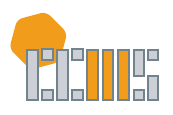Abstract / Synopsis
As a group, the artists educated near the turn of the 19th and 20th centuries possessed greater mathematical knowledge than expected of artists today, especially regarding constructive skills in Euclidean geometry. Educational theory of the time stressed such skills for students in general, who needed these to enter the workplace of the time. Mathematics teaching then stressed the use of manipulatives, i.e., visual and interactive aids thought to better fix the student’s acquisition of mathematical skills. This visual training, especially in geometry, significantly affected the early development of abstraction in art. This paper presents examples of this visual mathematics education and samples its effects on the development of abstract art in the first decades of the 20th century.
DOI
10.5642/jhummath.201902.03
Recommended Citation
Stephen Luecking, "Visual Teaching of Geometry and the Origins of 20th Century Abstract Art," Journal of Humanistic Mathematics, Volume 9 Issue 2 (July 2019), pages 4-28. DOI: 10.5642/jhummath.201902.03. Available at: https://scholarship.claremont.edu/jhm/vol9/iss2/3
Terms of Use & License Information
Included in
Art Education Commons, Fine Arts Commons, Mathematics Commons, Modern Art and Architecture Commons
